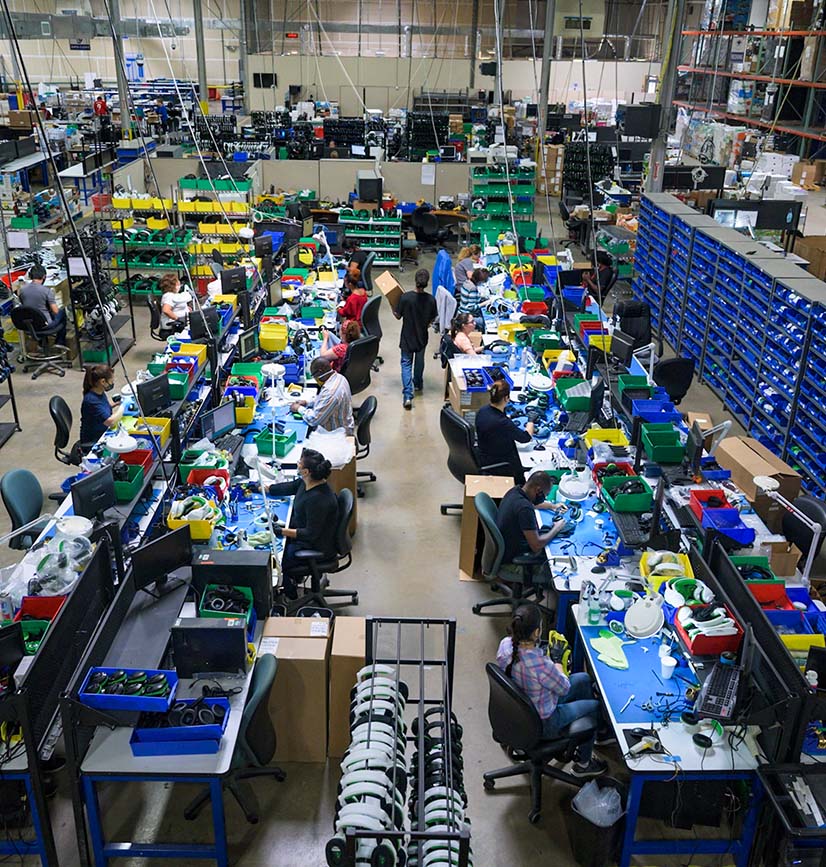Extending the Useful Life
Elevating Sustainable Reuse
The circular economy involves, reusing, repairing, refurbishing, and recycling existing products and materials as long as possible. In this way, the life cycle of products is extended.
Re-commerce companies need the technical know-how to perform testing, grading, and sorting of previously-owned products. Reuse strategies for products and parts include upgrading, repair, refurbishing, remanufacturing, and repurposing. Products or components that have reached a state where they cannot be used anymore, are considered “end of life” and are directed for recycling.
Buying used is better for the planet. It has been estimated that the total cost to mine virgin resources is 13 times more expensive than the cost to harvest the same resources from recycled electronics. To manufacture 100 cellphones, you would need approximately 3.4 grams of gold, and typically you would need to refine one tonne of gold ore for that much pure gold. When products and components are reused multiple times, this implies reducing waste and the need for crucial raw materials.
Envela takes a highly systematic approach to increase the life cycle of products and works to integrate a more circular economy to support a healthier planet for our community and generations to come.
Our Approach
De-Manufacturing
De-manufacturing can be defined as the disassembly and recycling of consumer products that would be otherwise discarded. Products are broken down into their individual sub-assemblies and components, with the goal of removing every usable component in a device. Those parts can be remanufactured into new goods and products. The remainder of the product or device is broken down further into its individual commodity components so all the remaining materials can be recycled. De-manufacturing done correctly can minimize the environmental impact and maximize the value of products rather than wasting all those resources.
Recycling
For example, the motherboard and metal parts of a computer can be smelted to recover the metals, which can then be used to create new computers or other devices. The computer’s plastic housing can be granulated and pelletized into plastic pellets that can be turned into a new computer, or any other products made of plastic.
Parts Harvesting
Via parts harvesting and re-use of the harvested components to the manufacturing process, customers significantly improve the Carbon Footprint (CFP) of their supply chain. We specialize in the market valuation and optimal application of reclaimed components, parts, and modules, which ensures the highest value recovery. We help our clients maximize the lifecycle value of their assets through reuse, parts harvesting, recycling, and re-marketing.
Refurbishment
Whether it’s an old computer, or a tennis bracelet, when you refurbish something, you clean it up and make it look or perform better. Refurbishment requires several technical steps to bring each piece as close as possible to its original condition. Many processes are used to restore items including cleaning, polishing, replacing lost or broken parts.
Refurbishing jewelry might require re-cutting chipped gemstones, repairing broken and worn prongs, thickening bezel walls, fixing worn or broken shanks, replacing missing diamonds, even removing previous attempts at repairs.
Electronic devices can also be refurbished. First, they wipe data, and then the device will undergo diagnostic testing. If faults are found technicians follow a rigorous program of replacing necessary parts and making repairs to ensure like-new condition. The final stage of the repair is to quality test and then repackage and re-kitting the item with accessories and instructions.
Buying refurbished can be rewarding as users get an excellent product at a much lower price point while helping lower CO2 emissions and saving natural resources. Refurbishing done right ensures customers get a brand-new experience with a much smaller carbon footprint.


